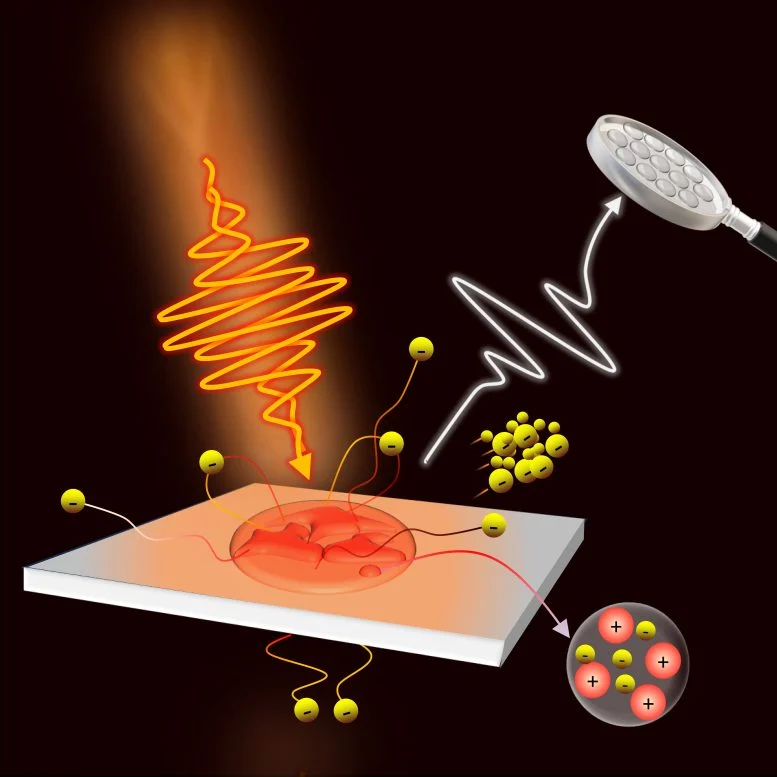
By Tata Institute of Fundamental Research September 8, 2024
Collected at: https://scitechdaily.com/single-shot-wonder-researchers-solve-laser-pulse-measurement-puzzle/
Scientists have introduced a novel method for accurately measuring ultrahigh power, ultrashort laser pulses, enabling significant advancements in laser technology and its application in increasingly powerful laser systems.
The Tata Institute of Fundamental Research in Mumbai has developed an innovative method for measuring ultrahigh power, ultrashort laser pulses comprehensively. Their findings have recently been published in the esteemed open-access journal, Optica.
What is this advance?
Laser, a marvel of the modern world, has produced the shortest time duration pulses ever known to humans. Not just that, it has also provided a means to pack large amounts of light energy in that extremely short duration leading to astronomically large ‘peak’ powers, in magnitude thousands of times larger than the total electrical power consumption of the world!
Optics is now truly a power game!
Measuring the temporal shape of these pulses is however no mean task and while scientists have devised clever ways over the past few decades, there remain several significant challenges.
For one, the time distortions that a short pulse suffers whenever it goes through a medium. And the larger the power, the more severe these distortions.
Challenges in Laser Pulse Measurement
Yet another major complication has to do with the pulse time profile being different at different points within the laser beam itself. Most often, scientists may not bother about these variations across the beam spatial extent and assume a single temporal profile. However, the larger the beam and/or the more the length it traverses in a medium, the more critical these distortions become, dramatically changing the pulse. And at ultrahigh peak powers, it is imperative to know what the time duration is at different points across the spatial extent of the beam.
The TIFR team used a specially designed instrument to measure the time profiles across spatial points in the ultrashort laser beam. They used an optical technique named ‘spectral interferometry’ at different spatial locations across the beam simultaneously, to achieve this. The team collaborated with the Umea University, Sweden on this study.
Advantages of the New Method
With the scientific world marching towards peak laser powers never imagined before (tens of thousand trillion watts!) in laser beams spread over diameters of several tens of centimeters, this method will not only be extremely useful but essential.
Here is yet another boost for this method. These ultrahigh power lasers emit pulses every once in a while – once over many seconds/ minutes/ hours. The earlier techniques of measurement needed to sample multiple pulses before estimating the pulse profile and will be extremely cumbersome.
The TIFR advance solves this too. It works for a single pulse!
Now, the icing on the cake. As laser peak powers shoot through the roof, the normal solid optical components cannot handle them as they break down by ionization. The technology is therefore moving towards using ionized matter or ‘plasma’ itself, to design these optical components. These plasmas can be highly unstable and cause further distortions in the spatiotemporal profiles of the pulse incident on them. The TIFR method is perfectly suited to measure these distortions.
A one-shot solution for all ultrahigh peak power lasers? That is the promise!
Reference: “Single-shot, spatio-temporal analysis of relativistic plasma optics” by Laszlo Veisz, G. Ravindra Kumar, Anandam Choudhary, Ankit Dulat, Amit D. Lad, Yash M. Ved and C. Aparajit, 19 August 2024, Optica.
DOI: doi:10.1364/OPTICA.522870
The study was funded by the Tata Institute of Fundamental Research, Mumbai, the Anusandhan National Research Foundation (ANRF), and New Delhi.

Leave a Reply